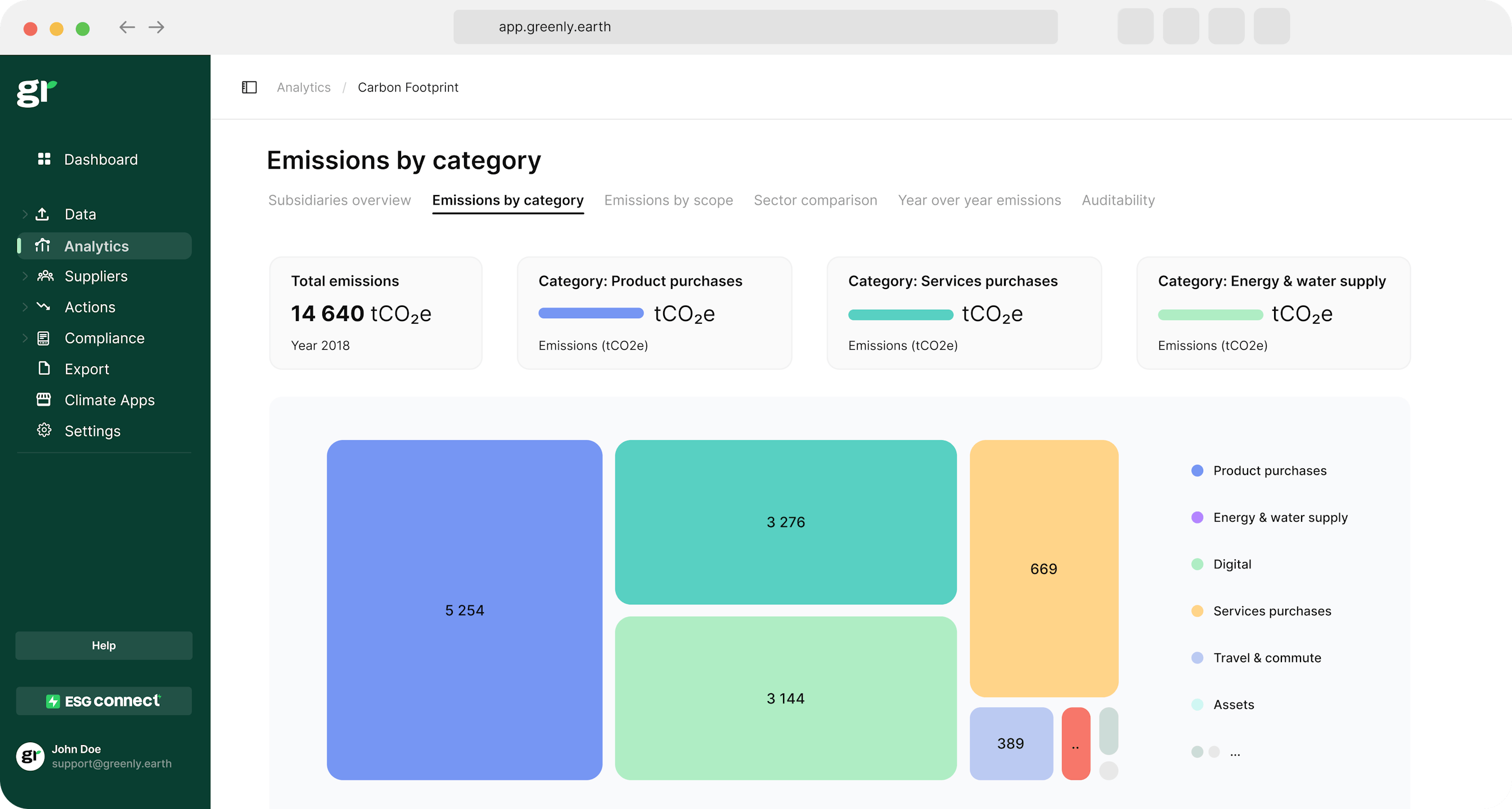ESG / CSR
Industries
What are Ozone Depleting Substances (“ODS”)?



Products like spray-on-sunscreen and hairspray have allowed for convenience, but did you know that some of these common household products could or used to contain ozone depleting substances that ultimately harm the environment and increase the amount of toxic substances surrounding the ozone layer?
Even if they don’t, anything that comes in an aerosol can isn’t good for the atmosphere – and it’s best to opt for lotion-based products whenever possible – as others can result in stratospheric ozone depletion, excess carbon dioxide, and potent greenhouse gases.
Unknowingly, individuals and businesses with high industrialization and production rates have been emitting ozone depleting substances into the atmosphere for years.
👉 What are ozone depleting substances, and why are they harmful to the environment?
What are ozone depleting substances?
Ozone depleting substances, otherwise known as ODS for short – are toxic chemicals that damage the ozone layer in the upper part of the atmosphere when they are able to escape. Many ozone depleting substances contribute to climate change as they have the capability to increase the temperature and warm their surrounding areas, in this case – the atmosphere.
Nowadays, ozone depleting substances are often replaced by F-gasses in attempts to combat climate change and further depletion of the ozone layer – as most ODS substances are now banned for common use.
What are some examples of ODS?
Some examples of ozone depleting substances include chlorofluorocarbon, carbon tetrachloride, hydrochlorofluorocarbons, halons, methyl chloroform, and methyl bromide.
Today, the only way to produce and put ozone depleting substances in the market is to label them as feedstock to be used solely for laboratory work. The ODS must be labeled and used solely for this purpose.
👉 It is important to note that while ozone depleting substances are banned, it can still be traded illegally through packaged shipments that would otherwise go unnoticed.
| Substance | Description |
|---|---|
| Chlorofluorocarbon (CFC) | CFCs are used in refrigeration, air conditioning, foam blowing agents, and aerosol propellants. They are highly stable and were widely used until their role in ozone depletion was discovered. |
| Carbon Tetrachloride (CCl4) | Used primarily as a solvent and in the production of refrigerants and propellants for aerosol cans. Carbon tetrachloride is a potent ozone-depleting substance. |
| Hydrochlorofluorocarbons (HCFCs) | HCFCs are used as interim replacements for CFCs in refrigeration, air conditioning, and foam production. While less harmful to the ozone layer than CFCs, HCFCs still contribute to ozone depletion. |
| Halons | Halons are used in fire extinguishers, especially in situations where water or other extinguishers would be ineffective or damaging, such as in aircraft and computer rooms. They are highly effective but very destructive to the ozone layer. |
| Methyl Chloroform (1,1,1-Trichloroethane) | Used as a solvent in industrial cleaning, particularly for metal and electronic components. Methyl chloroform has significant ozone-depleting potential. |
| Methyl Bromide | Used primarily as a fumigant in agriculture to control pests, weeds, and pathogens. Methyl bromide is a powerful ozone-depleting substance and is being phased out under the Montreal Protocol. |
What should you do if you discover banned ozone depleting substances?
If you discover an ODS in your vicinity, it is best to let local authorities know so that it can properly and carefully be disposed of – as it will be difficult to tell if the ozone depleting substance in question is toxic or not.
💡 Before ozone depleting substances were banned, they were used for refrigeration, air conditioning and heating systems, stationary fire protection systems and portable fire extinguishers, transportation that required refrigeration, and the production of magnesium.
Are ozone depleting substances the main cause for the depletion of the ozone layer?
Ozone depleting substances are indeed the main culprit for the depletion of the ozone layer.
The stratospheric ozone has been diminishing over the last 50 years according to scientists, and the fact that ODS substances can survive for so long in the atmosphere doesn’t help – ozone depleting substances can live up to 100 years.

What causes ozone depleting substances?
ODS are caused by highly processed or manufactured chemicals: like manufactured halocarbon refrigerants, various solvents and propellants, or foam-blowing agents – substances that are mostly likely to be used in laboratories, but can also embody themselves in daily household products.
👉 As there aren’t many substitutes for ozone depleting substances, besides F-gasses which do their own environmental damage – ODS is still used under certain circumstances.
When were ozone depleting substances banned?
Ozone depleting substances were slowly phased out in the United States as substances like chlorofluorocarbons and halonconsidered class one substances – meaning they have the greatest power to deplete the ozone layer and have priority to be banned in the United States.
Whereas class two substances, such as hydrochlorofluorocarbons, serve as transitory placeholders for most class one substances. Despite class two substances having less priority, these are still able to be phased out in the United States due to their potential to do environmental damage.
Ozone depleting substances are still used, but the majority of the ones that were used on a daily basis are now obsolete. HCFC is only used today to keep refrigeration equipment cool.
How do ozone depleting substances impact the environment?
Ozone depleting substances don’t just directly impact the ozone layer, but the depletion of the ozone layer itself has detrimental effects on the overall health of human life, animals, environment and marine life.
Let’s backtrack: you know when you go to buy new sunglasses, and they are advertised as protective against UV-B rays?
👉 The ozone layer acts like a window screen for the planet. Just like a window screen helps to keep bugs out in the summer while still letting fresh air inside for ventilation, the ozone layer helps to filter out harmful UV-B rays.
Ozone Depleting Substance Impact on Humans & Animals
This is precisely why the depletion of the ozone layer is so bad, because all forms of life and ecosystems on earth rely on the sun for their natural cycles. If damaging UV-B rays are able to get through, it can cause various catastrophic effects to all different forms of life.
For instance – since UV-B rays contribute to the formation of malignant melanoma, it ultimately increases the chances of developing skin cancer, sunburns, quick aging, eye cataracts, blindness and weakened immune system.
UV-B rays negatively impact animals, too. The newfound and unwarranted exposure to ultraviolet radiations can cause both skin and eye cancer in animals.
Ozone Depleting Substance Impact on Agriculture
Plants and crops are affected by the ozone layer’s depletion as well. This is because UV-B rays deter maximum plant growth and in turn, result in smaller leaf sizes, less flowering and photosynthesis in plants, and edible crops to be eaten for humans that aren’t as good quality as they could be.
In addition, the decrease in these productive plant cycles impacts soil erosion and the carbon cycle.
As if all those negative consequences weren’t enough, the aquatic food chain is also impacted by the ozone layer’s depletion.
💡 Yes, even animals that dwell in the water are impacted by the deleterious effects of the sun due to the depletion of the ozone layer!

Plankton and zooplankton are impacted due to their exposure to UV-B rays, and if the population of planktons decreases – then the structure of the marine life’s food chain would be thrown completely off balance.
Think of it this way: cows couldn’t be used to produce beef products if they were no crops or water for them to consume. It is the same concept in the ocean; plankton are like the basic crops for the rest of marine life as plants and grains are to humans.
It’s clear that ozone depletion substances are having an abysmal effect on all forms of life.
👉 What can be done to improve the state of the ozone so that these hazardous effects can become less prevalent in our daily lives?
How can we aim to reduce the amount of ozone depleting substances in the atmosphere?
Is there anything that individuals and businesses alike can do to reduce the amount of ozone depleting substances present in the atmosphere?
The best way to protect the ozone layer would be for governments around the globe to take more concrete action to establish regulations against the use of ODS.
For example, a successful endeavor in limiting or banning the use of ozone depleting substances is the Montreal Protocol – which was first proposed at the Vienna Convention for the Protection of the Ozone Layer in 1985 and was completed in 1987.
💡 The Montreal Protocol strives to unify the world in a mission to reduce or better yet, completely diminish the use of ozone depleting substances. The Montreal Protocol aims to successfully do this in a feasible manner by creating different timelines for ODS goals to be reached depending if a country is developed or is a developing country.
How can we protect the ozone layer?
While implementing laws to regulate the use of ODS, it isn’t the only pathway to see improvement in the Earth’s ozone layer.
In fact, individuals can help to mitigate the ozone layer from depleting, too!
Buy Organic Food & Cleaning Products
💡 Individuals can aid in the fight against the use of ozone depleting substances by avoiding pesticides whenever possible. For instance, supporting organic fruits and vegetables instead of purchasing products that you know have used pesticides does not help reduce the supply and demand of ozone depleting substances. So, buy local and organic whenever you can.
Lastly, did you know that a lot of your household cleaning supplies are loaded with ozone depleting substances?
We should strive to create more Eco-friendly cleaning supplies that can be affordable for everyone.
Refrain from GHG Emitting Transportation
Also, abstaining from the use of any vehicles that produce large amounts of greenhouse gasses can help to prevent the depletion of the ozone layer. Greenhouse gasses provoke global warming, and are also a culprit of the ozone layer’s depletion. Therefore, it’s best to walk or make use of public transportation, like biking or the metro, if you are a daily commuter.
Lastly, did you know that a lot of your household cleaning supplies are loaded with ozone depleting substances?

Developed Countries Should Encourage the Use Eco-Friendly Technology
Air conditioners aren’t great for the ozone layer either, as they have ozone depleting substances that easily escape into the air and impact the ozone layer. Therefore, it’s imperative we make use of our improved technology and strive to create more environmentally technology friendly central heating and air conditioning.
All of these are good measures to take to protect the ozone layer, but reducing the use of ODS is also imperative. This is because ozone depleting substances provoke powerful greenhouse gasses that contribute to global warming and rising temperatures – another catastrophe on its own.
More Environmental Legislation
The Montreal Protocol was quite successful in this endeavor to reduce the use of ODS, and they have simultaneously preserved the state of climate change and the ozone layer as a result.
💡 In fact, the Montreal Protocol has mitigated around five to six times the amount of greenhouse gas emissions than the Kyoto Protocol did, and therefore has been more successful than the Kyoto Protocol ever was!
Despite the attempts to use F-gasses as a substitute for ozone depleting substances, it has been scientifically proven that these F-gasses trap heat in the atmosphere and contribute to global warming. It’s crucial that cost-effective alternatives are created to prevent the use of both F-gasses and ozone depleting substances from causing further damage to the already fragile ozone layer.
In conclusion, protecting the ozone layer is contingent on the reduction of both ozone depleting substances and limiting the potential for greenhouse gasses to enter the atmosphere. It isn’t an easy task, but together with technology – it’s possible for us to reduce the use of aerosol propellants and to get substances controlled for the sake of protecting the ozone layer.
What about Greenly?
If reading this article about ozone depleting substances, otherwise known as ODS, has made you interested in reducing your carbon emission to further fight against climate change – Greenly can help you!
At Greenly we can help you to assess your company’s carbon footprint, and then give you the tools you need to cut down on emissions. Why not request a free demo with one of our experts - no obligation or commitment required.





